Visiting the Orsay Museum is trying? Here's all you need to know about this unique place of culture in the world.
The Musée d’Orsay is located in the very chic 7th arrondissement of Paris, along the left bank of the Seine. He is famous all over the world for his collection of impressionist art. It houses various forms of artistic expression created by the greatest European masters. 4,000 works exhibited on more than 57,000 m2 make it one of the largest museums in the world. Completely refurbished in 2011, this major cultural space has not ended up surpriseing an ever larger audience.
If you want to be part of it, we explain how to visit the Musée d’Orsay in the rules... of art!
The History of the Orsay Museum
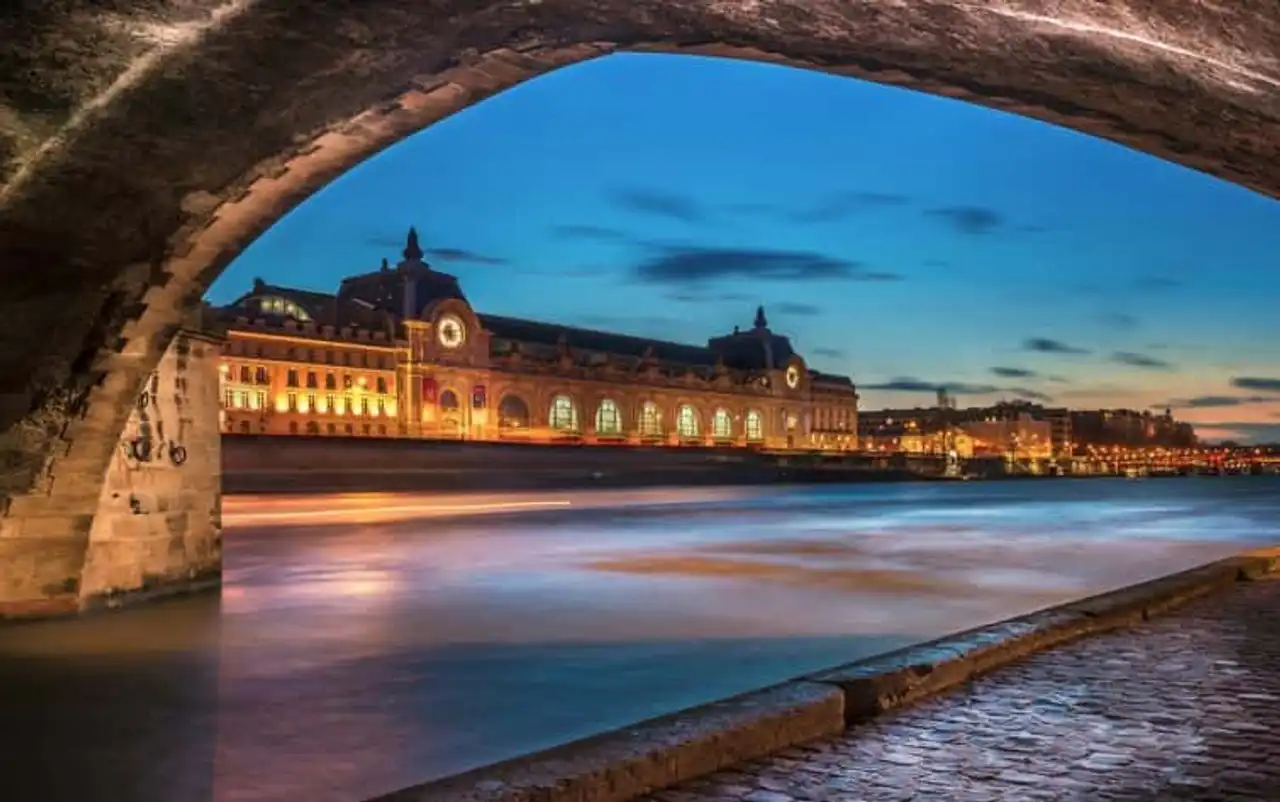
Photo credit: Shutterstock – Marchal
The current Orsay Museum building was built under Napoleon I in almost 30 years. Initially, the Palais d’Orsay was to house the Council of State and the Court of Auditors. He completed this task until 1871 when he was set on fire by the insurgents of the Commune of Paris. Redesigned as a railway station, he housed the visitors of the Exposition Universelle from 1900 to Paris.
Afterwards, the now-named Gare d’Orsay welcomed trains, but traffic was gradually limited to suburban connections. Under the Occupation and until 1983, the station became a shipping centre, a reception centre for prisoners of war, a sales room and a place of residence for a theatre troupe. It was in 1977 that President Giscard d’Estaing decided to transform him into a museum. There was then no Parisian cultural space entirely dedicated to national collections.
It was only in 1981 that his successor François Mitterrand gave life to the idea. For three long years of hard work made the transformation into a museum of this place of history. Under the aegis of architects Renaud Bardon, Pierre Colboc and Jean-Paul Philippon, it was finally done. The first collections of paintings by the Musée d’Orsay came from the Musée du Luxembourg founded in 1818 by Louis XVIII. Others then came to take place under the splendid metal structure characteristic of the place.
In 1986, the Musée d’Orsay opened its doors to the general public. With a collection of world-famous impressionist and post-impressionist works, he attracts 3 million visitors a year. To offer a ticket to the Musée d’Orsay, it is to contemplate the work of the world’s greatest painters. But not only: discover below the treasures of which this sublime demeasured gallery is full of.
The permanent exhibitions of the Musée d’Orsay
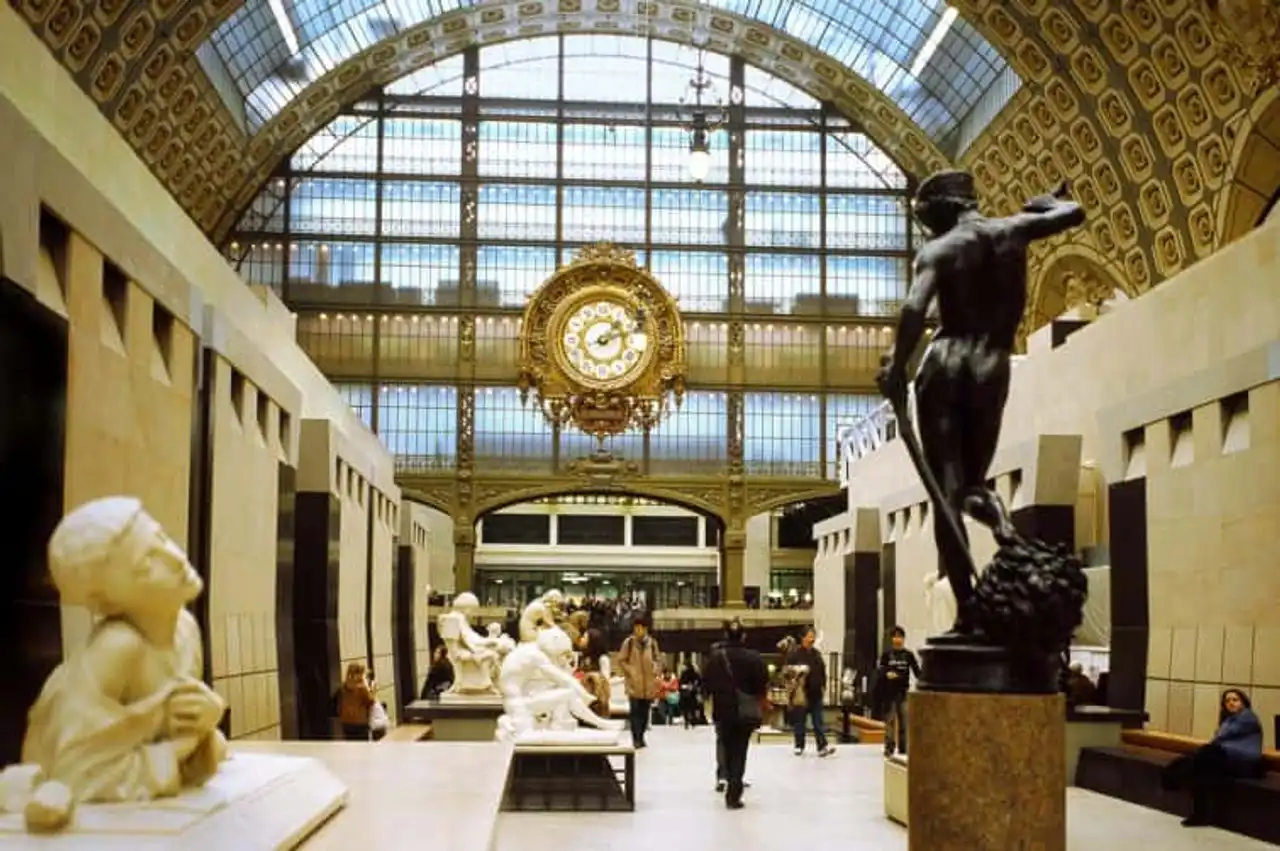
Photo credit: Shutterstock – enricoRubicondo
Visiting the Musée d’Orsay begins with a fairytale crossing of the aisle of sculptures under a very typical Belle Époque glass. It overlooks the visitor over 30 meters and ensures exceptional brightness at the place. The classic masterpieces of Rodin, Daumier, Degas, Pradier and Carpeaux cove the immaculate "White Bear" of François Pompon.
Later, the paintings of Bouguereau, Room 3, subjugate visitors. “Dante and Virgile” precedes “L’Angélus” by Jean-François Millet, Room 4, before leaving Courbet. Yes, Courbet made a scandal with his "World Origin" exhibited in Room 6! De sumptuous creations by Toulouse-Lautrec pose alongside Félix Vallotton and Pierre Bonnard's "White Cat". In room 14, it is Édouard Manet in person who welcomes you. His " Portrait of Emile Zola" and "Le Fifre" are worth a visit.
The gallery of impressionists located on the top floor is obviously the key moment of your visit to the Musée d’Orsay. Nine recently restored rooms house the jewels of Vincent van Gogh and Paul Gauguin. Here are "The Women of Tahiti", "La Méridienne", "La Nuit étoilée sur le Rhône" and a superb Van Gogh self-portrait.
Not far, post-impressionist creations attract the gaze with their flamboyant colours. A farandole of Monet, Cézanne, Pissarro or Renoir defies in front of your bahish eyes. Most of us owe to Gustave Caillebotte, a patron who left his huge collection to the state at his death. The painter Étienne Moreau-Nélaton did the same: he had to have the exquisite presence of Manet’s “Weed Lunch” on the grass. Let's finish by referring to the 45,000 photographs sheltered by the museum, some of which are permanently exhibited in a dedicated space.
Temporary exhibitions of the Musée d’Orsay
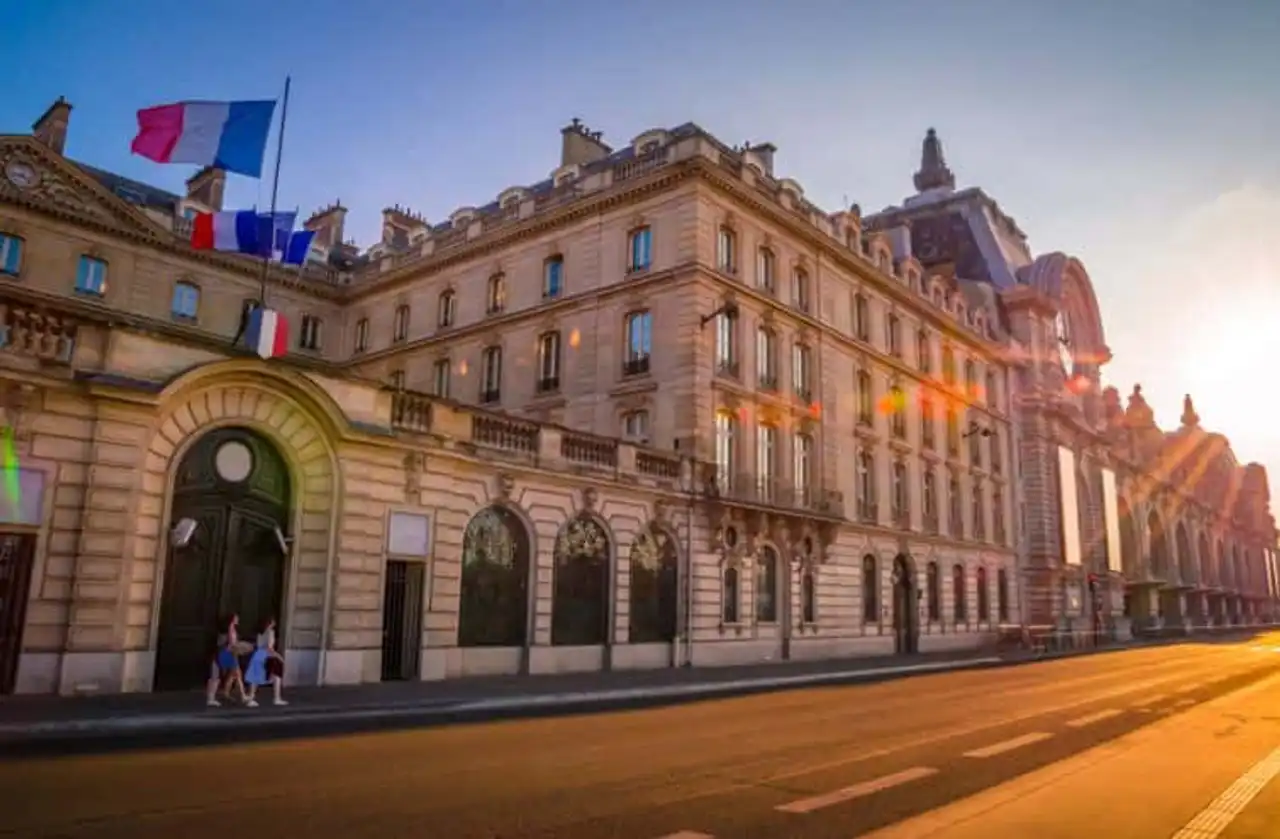
Photo credit: Shutterstock – Olena Z
Another incommensurable cultural richness of the Musée d’Orsay: its ability to welcome ready or exchanged works. The various temporary exhibitions are often devoted to an artist. For example, you can attend the exhibition “Le Spleen de Paris” by Marlène Dumas until January 30, 2022.
The 7th art is also a topic regularly discussed in this 7th arrondissement palace. The event « Finally the cinema ! » took place until January 16, 2022 and retraces the History of the Great screen. Jean-Philippe Delhomme and Maylis de Kerangal will unveil until February 13, 2022. maestria from Gaudi will be presented to you until July 17, 2022. The great Aristide Maillol, finally, will hold place from April 12 to August 21, 2022 in a highly anticipated "Harmony Quest" collection. If you wish, you can find the entire program just here .
The Auditorium of the Musée d’Orsay
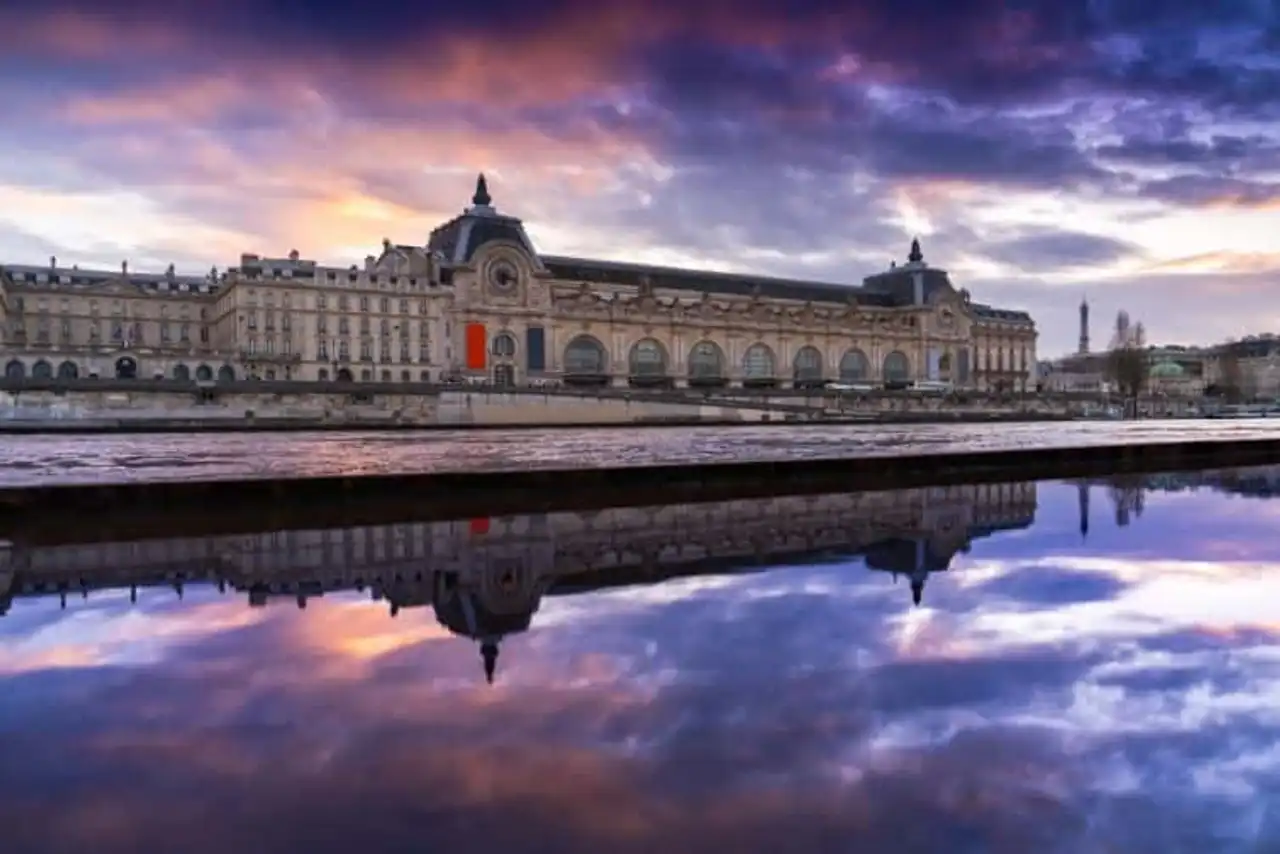
Photo credit: Shutterstock – Berny-1
Visiting the Musée d’Orsay is walking around a building so large that one could evoke its size in hectares: almost six! In addition to the monumental galleries, an entire space is dedicated to the Live Arts and Animation. Throughout the year, the Auditorium presents musical and film events related to its own artistic content.
Symposiums, lectures and shows for young audiences are also organized. Access to it requires descending at -2 level under the museum’s reception area. The structure of this 347-seatered room has this in particular that it is entirely made of wood. Result: an exceptional acoustic enriched with state-of-the-art equipment. Films, shows, operas and plays are the subject of grandioseness.
Is there a guided tour of the Musée d’Orsay?
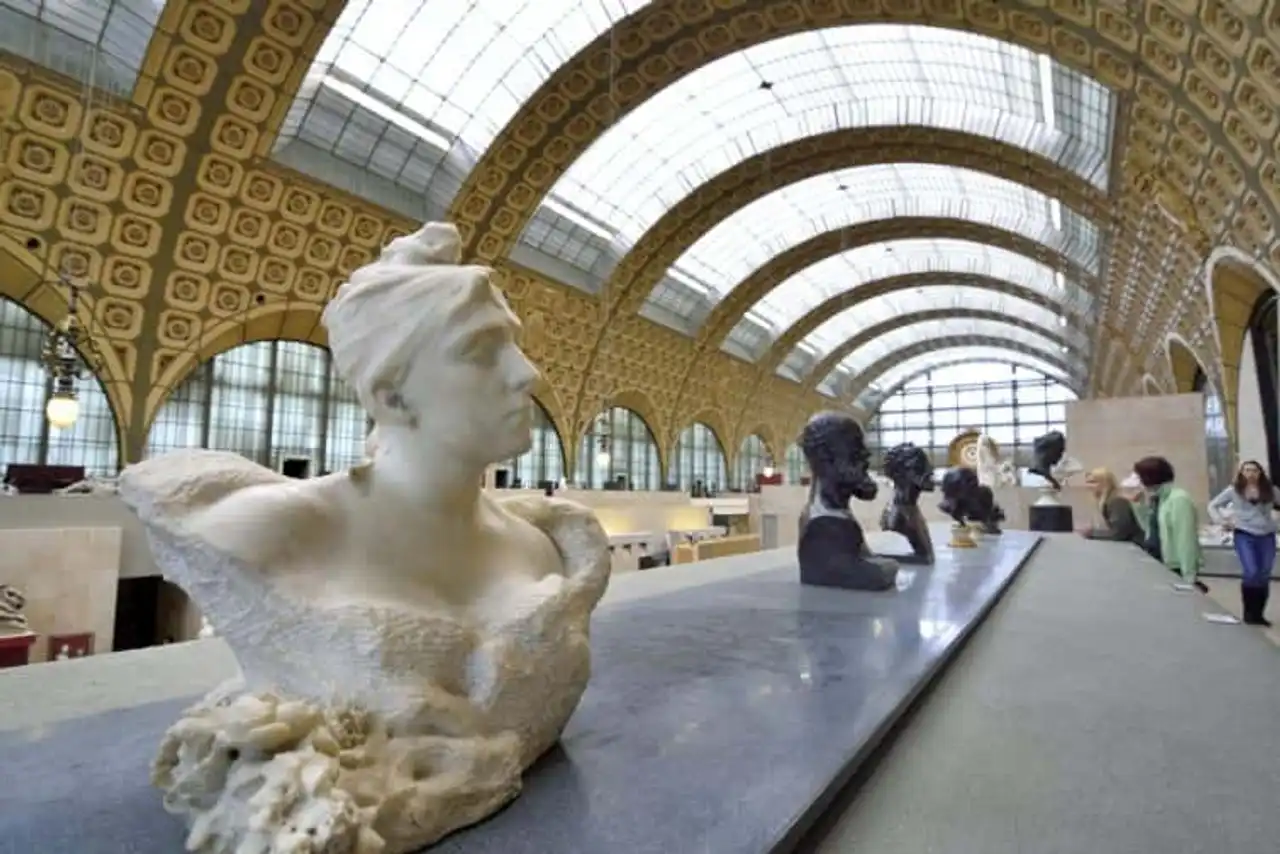
Photo credit: Shutterstock – JamesHou
In total autonomy, visiting the Musée d’Orsay can be done thanks to the audioguides . They are available in many languages and offered to 5 € . An application “The Musée d’Orsay en famille” adapted to tablets is also charged 5 € . This solution is ideal for visiting the Musée d’Orsay at its pace.
To deepen your knowledge and knowledge of the works presented, opt for a real guided tour. It should be noted that several themes are proposed by the guides, including some for children. Every Sunday, for example, day-trips are organized for visitors who come with a family. What to add the useful to the pleasant and the pedagogy to the playful!
Are there combined visits?
Visiting the Orsay Museum is good. But a ticket to the Musée d’Orsay and a second major cultural site is even better! Here is how to complete your artistic journey in the heart of Paris.
Orsay Museum and Louvre Museum
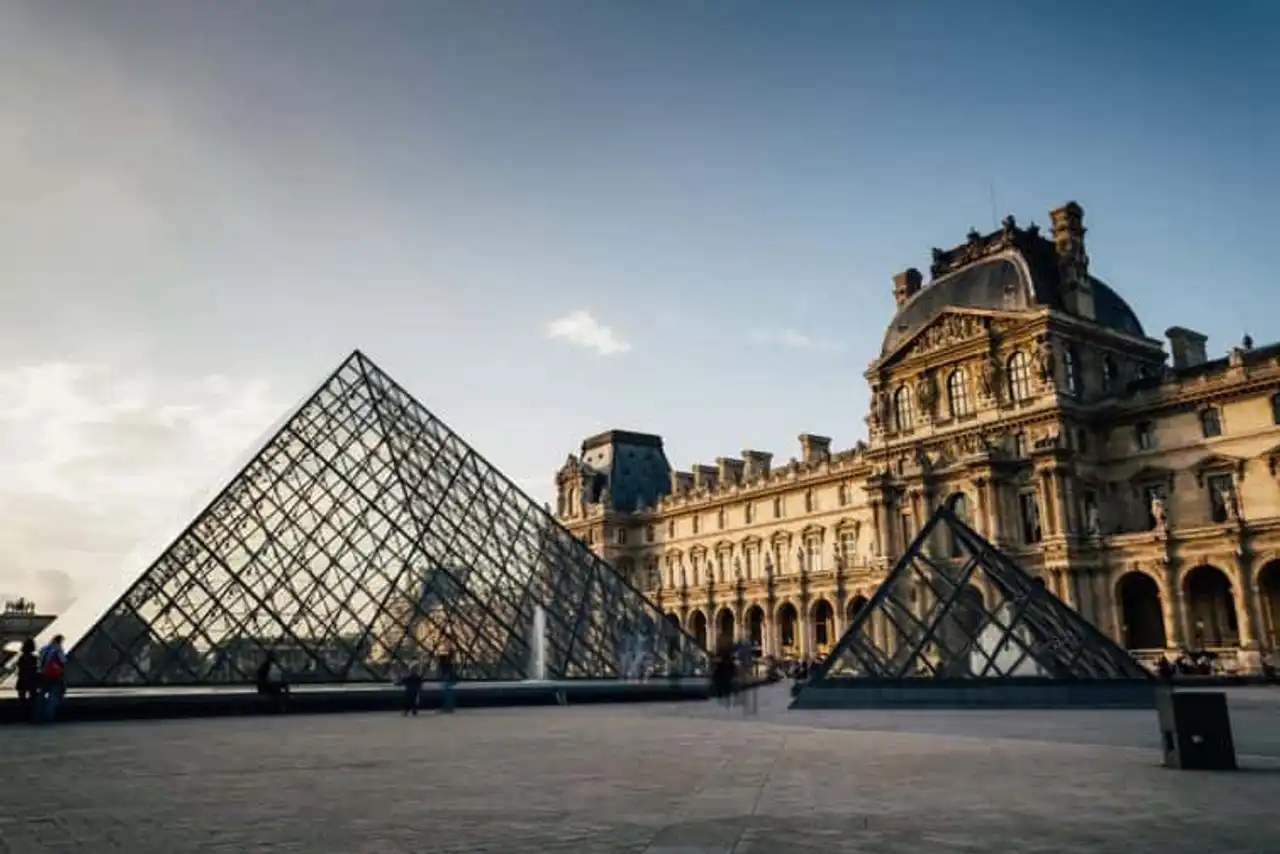
Photo credit: Shutterstock – Sergii Molchenko
If the Musée d’Orsay is one of the most famous in the world, the Louvre is even more famous. This combined ticket opens the doors of the famous palace now home to more than 35,000 jewels. Your guide will establish a chronological journey beginning with the works of ancient Greece to the famous Joconde. Art, History and Civilizations are only one here. You will then enjoy a gourmet lunch break before taking the guided tour of the Musée d’Orsay.
Orsay Museum and Montmartre

Photo credit: Shutterstock – f11photo
After the day’s visit to the Musée d’Orsay, you’ll complete it with that of the picturesque Montmartre district. Don't worry, the transport is understood! Montmartre, it was here that the Impressionist painters were entangled in the nineteenth century. For these artists, this northern-eastern Parisian district was the epicenter of their creation... sometimes disturbed in the volutes of smoke and the vapours of absinthe. From the paved streets of the Moulin Rouge to those of the basilica of the Sacred Heart , the ride is frankly worth the detour.
Schedules and rates
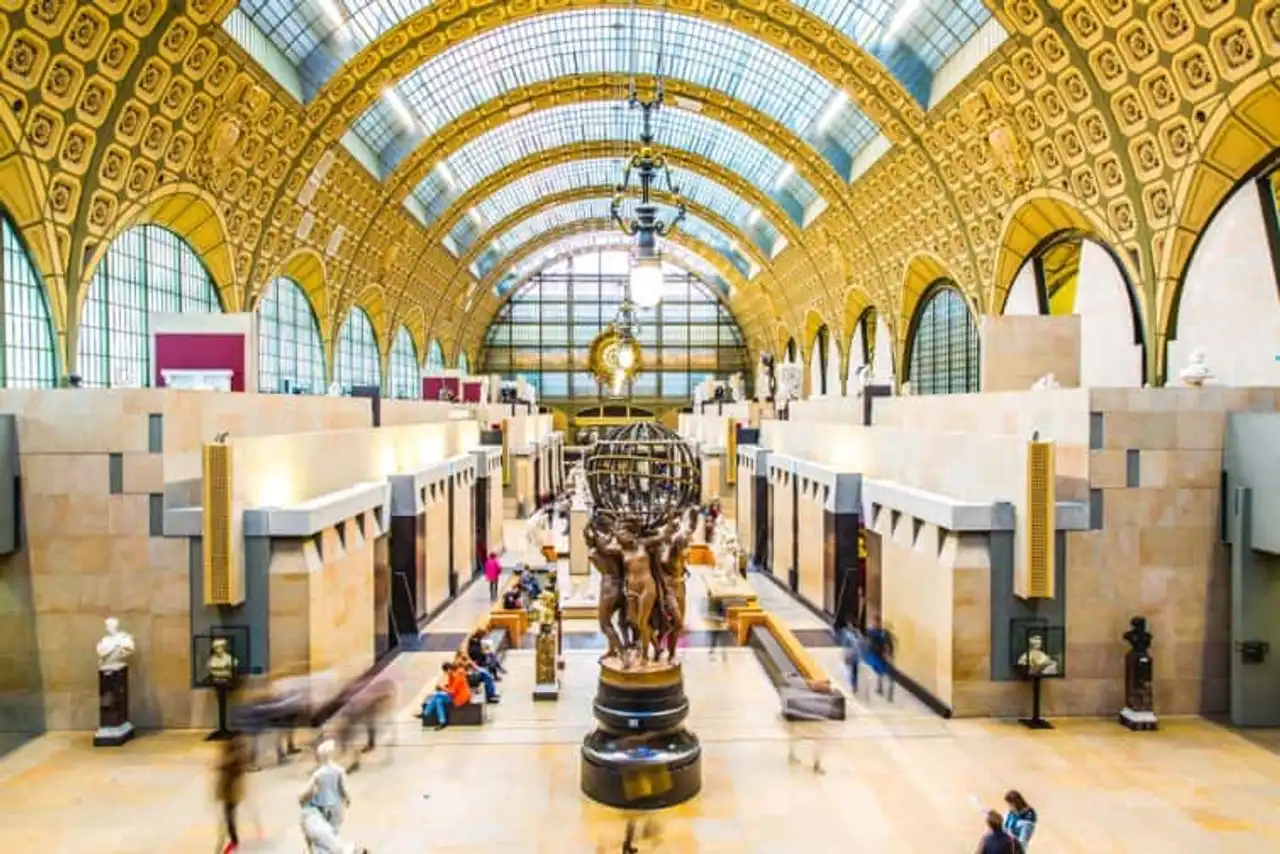
Photo credit: Shutterstock – Finn stock
Visit the Orsay Museum is possible every day except Monday . It's open. 9.30 a.m. to 6 p.m. of the Tuesday to Sunday . The Thursday , the closure is pushed back 9:45 .
The full tariff is fixed 16€ while the reduced rate is displayed 13€ . The reduced rate is for adult companions of a young person under the age of 18 and holders of a large family discount card.
free applies to young people under the age of 18 and to 18-25 years nationals of a European Union country. They also benefit job seekers, disabled visitors (and their companions) and White Card members.
- Good plan: the first Sunday of each month, the entrance is free for everyone!
How to go to the Orsay Museum?
The Musée d’Orsay is at the 1, rue de la Légion d’Honneur in the 7th arrondissement of Paris. To access it, borrow the metro line 12 to the station Solférino . You can also take advantage of the RER line C (Orsay Museum). Buses 63, 68 , 69 , 73 , 83 , 84 , 87 and 94 It'll be easy for you.
A taxi dock & VTC is close to the Anatole-France dock. Tremeraires, do you enjoy driving in Paris? The car parks of Carrousel du Louvre and Bac Montalembert will welcome your vehicle. The ideal? Getting around by bike or scooter, the neighborhood is really sublime and the dedicated routes perfectly secure .
What to do around the Orsay Museum?
Eugène Delacroix Museum
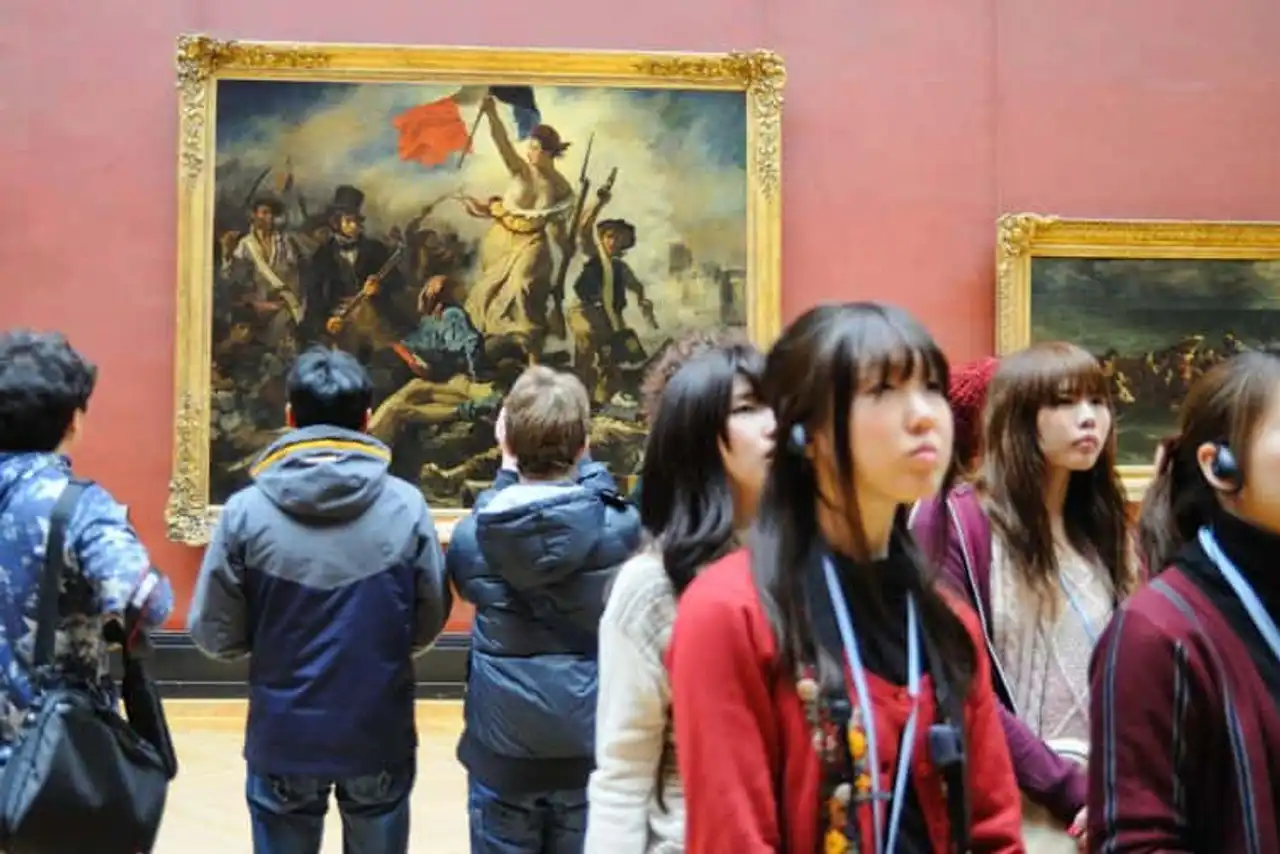
Photo credit: Shutterstock – Christian Bertrand
Founded in the late 1920s, the Eugène-Delacroix National Museum was installed in the painter's last apartment. There is a beautiful selection of paintings, drawings, watercolours, pastels, sketches or preparatory studies. It also includes touching manuscript letters and photographs of his illustrious entourage (Baudelaire, Théophile Gautier or George Sand).
- Address: 6 Rue de Furstemberg, 75006 Paris
Rodin Museum
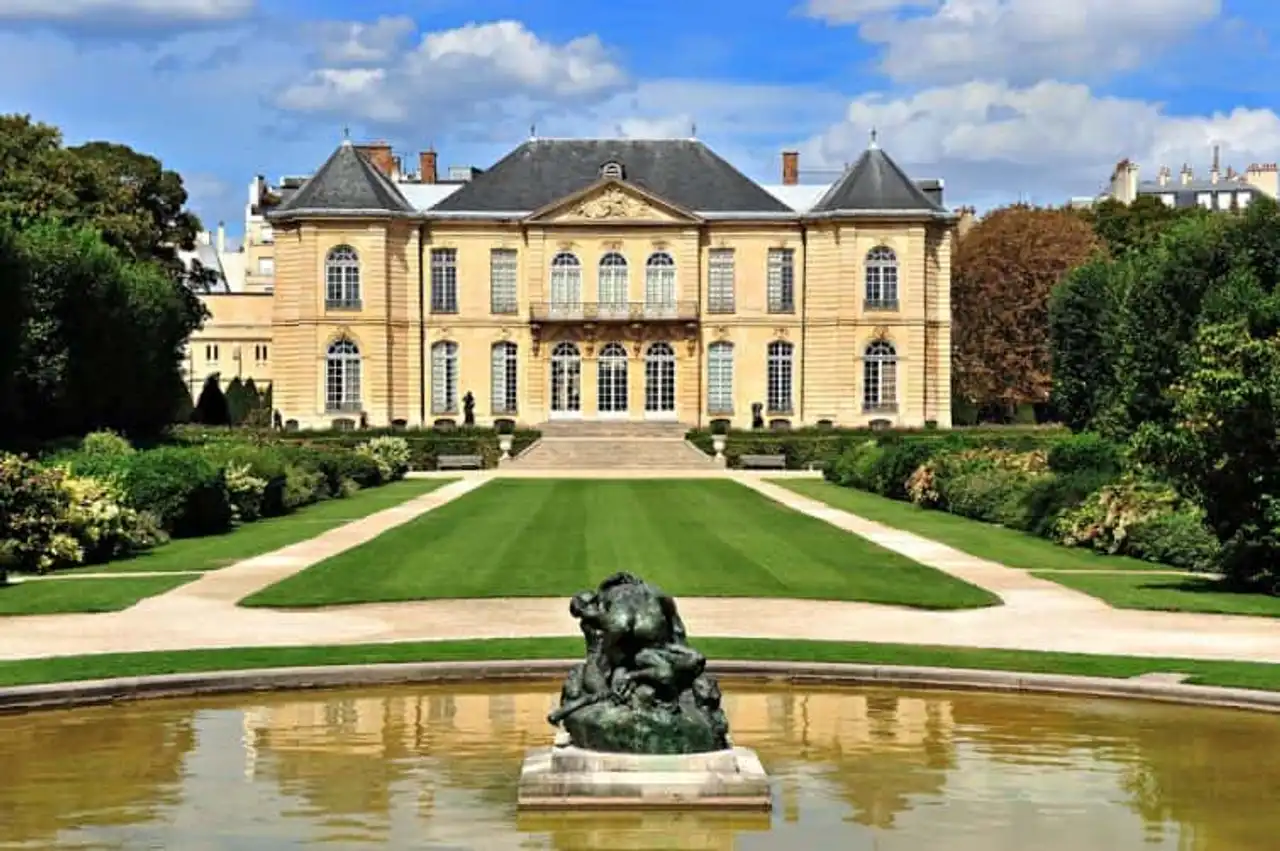
Photo credit: Shutterstock – Zoran Karapancev
It’s just a step away from the Eiffel Tower and the Invalides that we access the Rodin Museum. Nestled in a splendid 18th century hotel surrounded by three hectares of garden, it houses the sculptures of the realistic master. Bronzes, various drawings and sculptures bring fascinating insight into the artist and his vision of Art. An unmissable tourist in the heart of Paris.
- Address: 77 Rue de Varenne, 75007 Paris
Palais Garnier
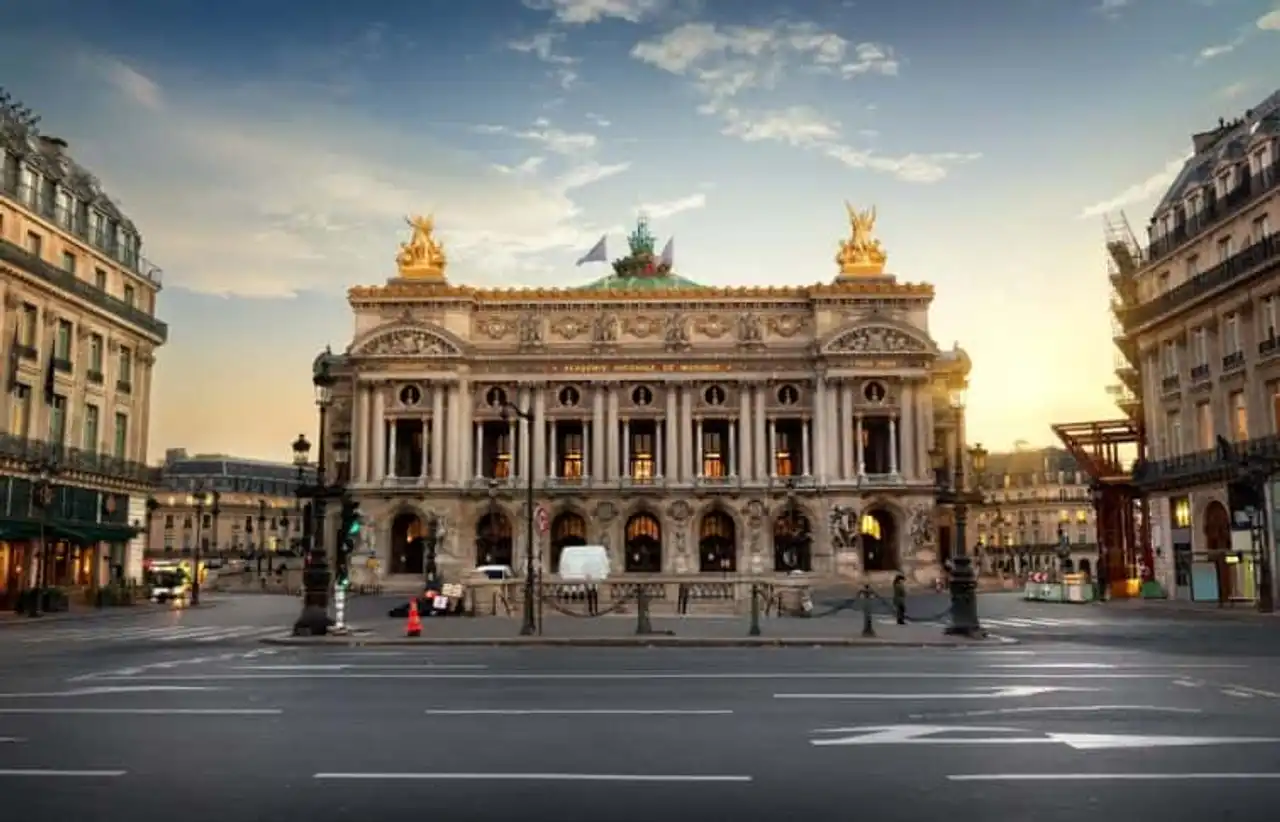
Photo credit: Shutterstock – givaga
The Paris Opera dominates the square of the same name in the 9th arrondissement. This masterpiece of baroque neoclassicism impresses with its richly decorated façade, monumental staircases and Italian hall. Raise your head: yes, the painted ceilings were painted by the great Chagall in 1964. This historic monument inaugurated in 1875 will have made the great hours of Maria Callas and Rudolf Noureev. Open to visitors during the day, there are beautiful lyrical and choreographic performances in the evening.
- Address: Place de l’Opéra, 75009 Paris
Where to eat around the Orsay Museum?
The Good Excuse

Photo credit: Facebook – The Good Apology
A refined cuisine featuring fresh and original dishes combined on a reduced menu. The property has a very pleasant small terrace on a little walk-in street. Don’t look for excuses so you don’t have to go and enjoy it after your visit to the Musée d’Orsay...
- Address: 48 rue de Verneuil, 75007 Paris
122

Photo credit: Facebook – LE 122
The galleries of the Musée d’Orsay seduce you? You will be as much by the sleek decor, the warm atmosphere and the quality of the products served at 122. Extra-fresh cabillaud, Chinese cabbage or hazel ice stand on a short but well-made map. A reference for who likes to make good money.
- Address: 122, Rue de Grenelle, 75007 Paris
La Calèche
Miam, we're still alive! A warm welcome, an intimate decor and a lovely terrace to enjoy fresh and gourmet dishes. It’s good, homemade and seasonal. Special mention of the wines provided and its reasonable prices. Our opinion? Book as soon as possible, it is a must !
- Address: 8 rue de Lille, 75007 Paris
Where to sleep around the Orsay Museum?
The Little Chomel
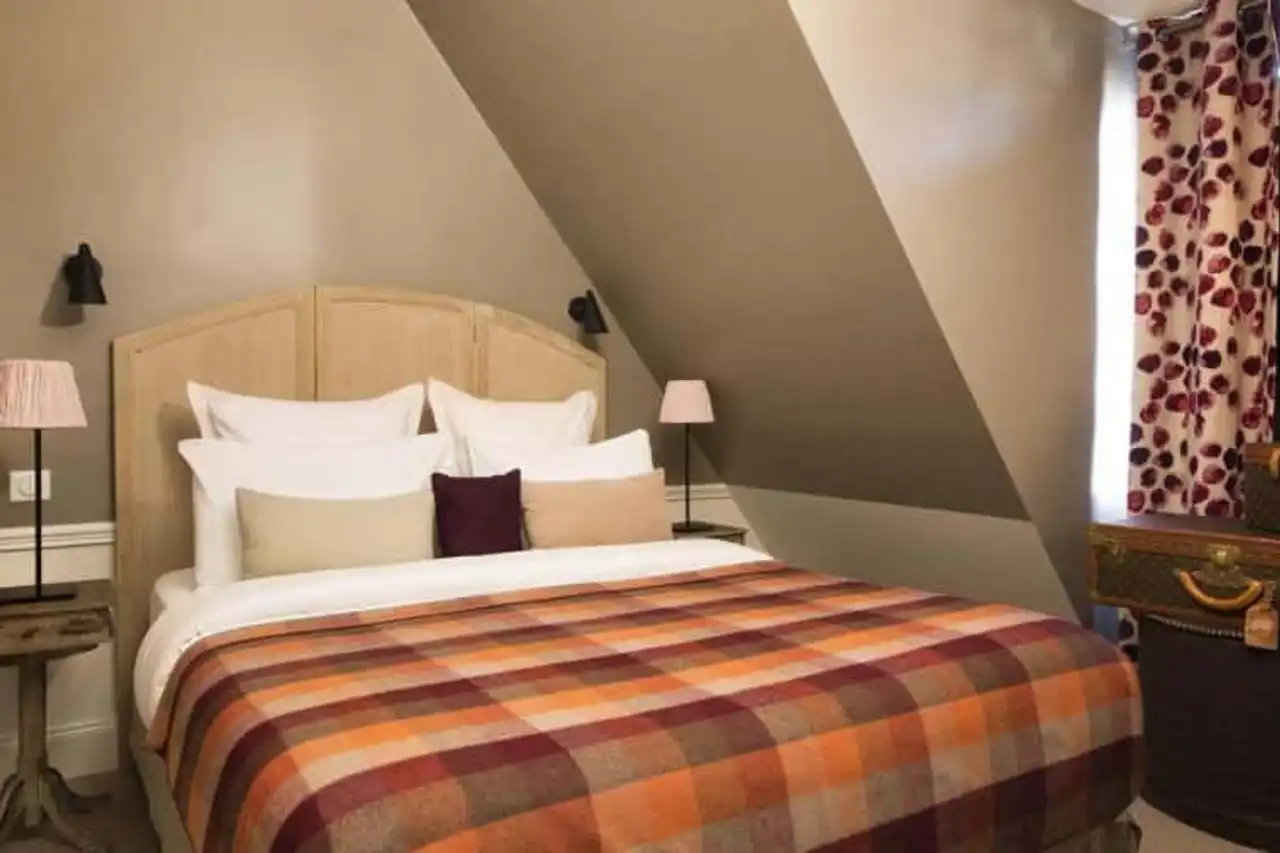
Photo credit: Booking
A small human-sized hotel in the heart of Saint-Germain-des-Prés. Here suites and cozy rooms overlook a living street filled with shops and cafes. Germanopratins will undoubtedly appreciate the quality of the associated services and the excellent value for money.
The Pavilion
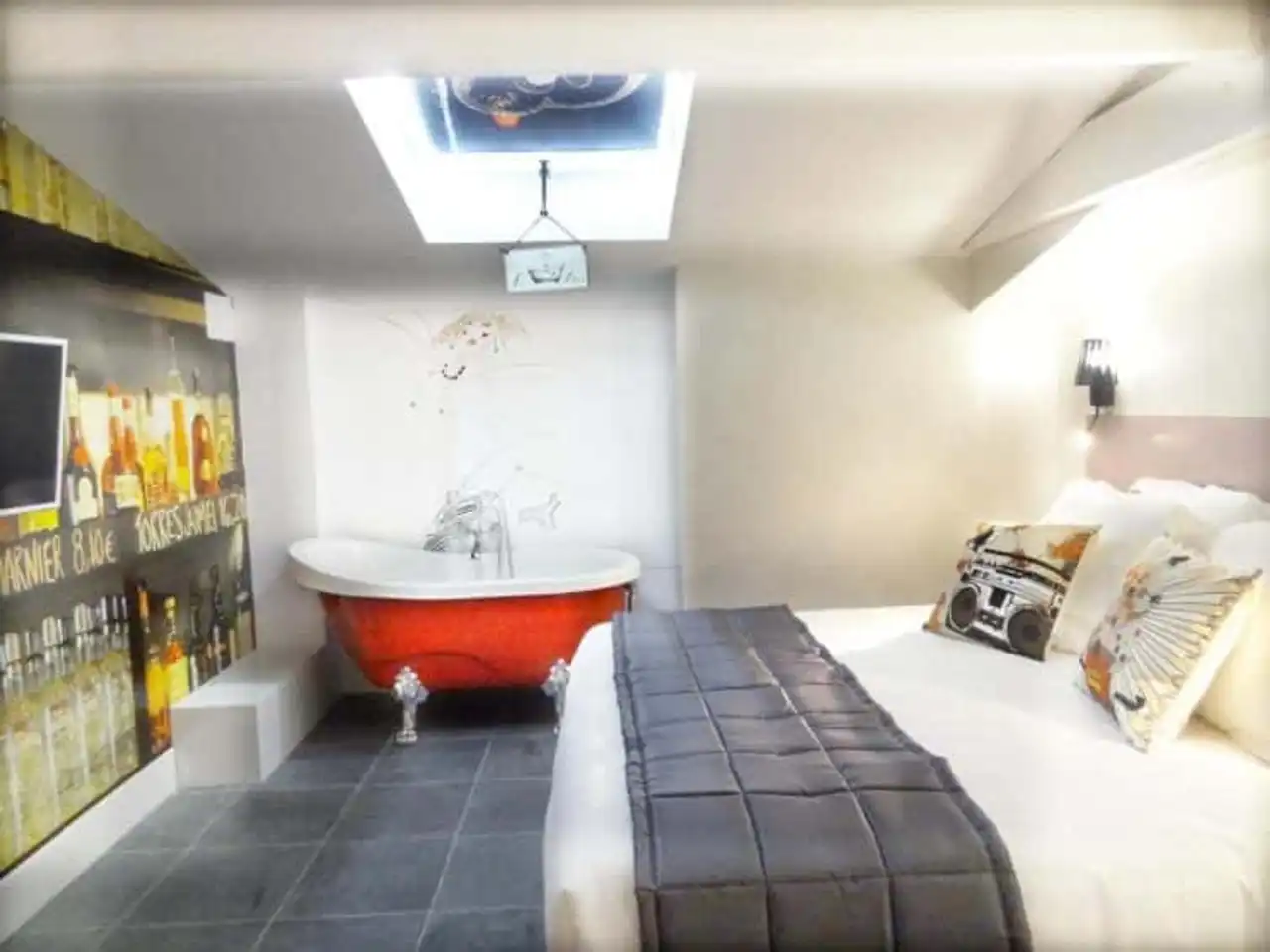
Photo credit: Booking
Welcome rue Saint-Dominique to enter a former redesigned convent in a first choice hotel establishment. The Pavilion is a short walk from the Eiffel Tower and the Hôtel des Invalides. It has beautiful rooms decorated with exposed stones and a pretty flowery courtyard. Breakfast made of organic products will ensure you keep your visit to the Orsay Museum!
La Canopée

Photo credit: Booking
A nice little name for a nice little hotel. Ideally located between La Madeleine and Place Saint-Augustin, La Canopée welcomes tourists who wish to offer themselves a little Parisian moment only to them. You will enjoy the neat look of the rooms and the quality of the services provided.
FAQ
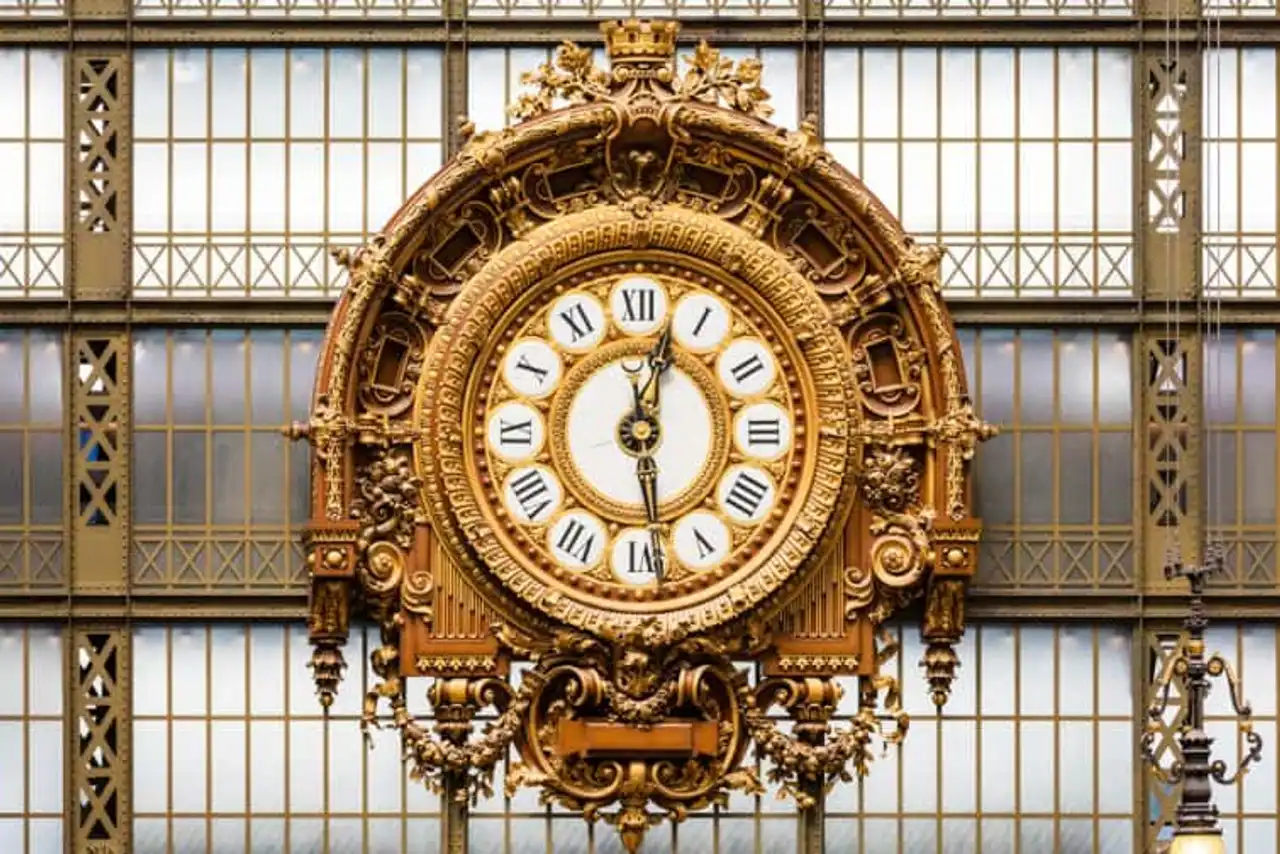
Photo credit: Shutterstock – Premier Photo
What is the duration of the visit to the Musée d’Orsay?
Count about 2 hours to visit the Musée d’Orsay, at least its essential collections. Plan one half day To do everything, it’s very big... and have a plan!
Why should he book his ticket online?
Depending on the affluence, the queue to buy tickets can be very long. Some temporary exhibitions also attract thousands of visitors. Without a ticket, you will have to borrow the A-entrance and sometimes wait long hours. Munis of your cut-file ticket you will only have to head to Entrance C, present it and return. More effective, right?
What is the best time to visit the Musée d’Orsay?
You won’t be surprised: to visit the Musée d’Orsay in the best conditions avoid the monster tributaries of the weekend or school holidays. Prefer a visit Weekly if possible. Know that in Paris museums are more frequent in the morning than in p.m. ... and more cured the days when it rains only when it is beautiful!
What is the waiting time to visit the Musée d’Orsay?
Your cut-file ticket reduces the waiting almost to nothing. If you buy it on site wait for a few dozen minutes to several hours.
Are the photos allowed?
Since 2015, the Musée d’Orsay has decided to allow the photos. Indeed, the Minister of Culture having posted on Instagram one of his own photographs, the ban on taking pictures was lifted. However, be aware that flashes, tripods and selfie perches remain strictly forbidden! In addition, some works cannot be photographed, sometimes during temporary exhibitions. In this case, prohibition pictograms will be clearly displayed on the course.
Are there dressing rooms at the Musée d’Orsay?
Yes and no. It is impossible to leave clothes or umbrella for example. Suitcases, travel bags and backpacks will be to hand over in a dedicated space the time of your visit.
Is the Musée d’Orsay accessible to people with reduced mobility?
Yes, in full. Lifts and access ramps make it easier for people with reduced mobility. In the previously mentioned "vestiaries" you will find ready wheelchairs as well as folding seats.
Another thing: access is priority and without any waiting for the PMRs. To take advantage of this, go through the parvis of the entry C .
Are pets allowed at the Musée d’Orsay?
Dogs, cats and other pets are only little sensitive to art. This is why the direction of the Musée d’Orsay only tolerates guide dogs and assistance in the museum enclosure.
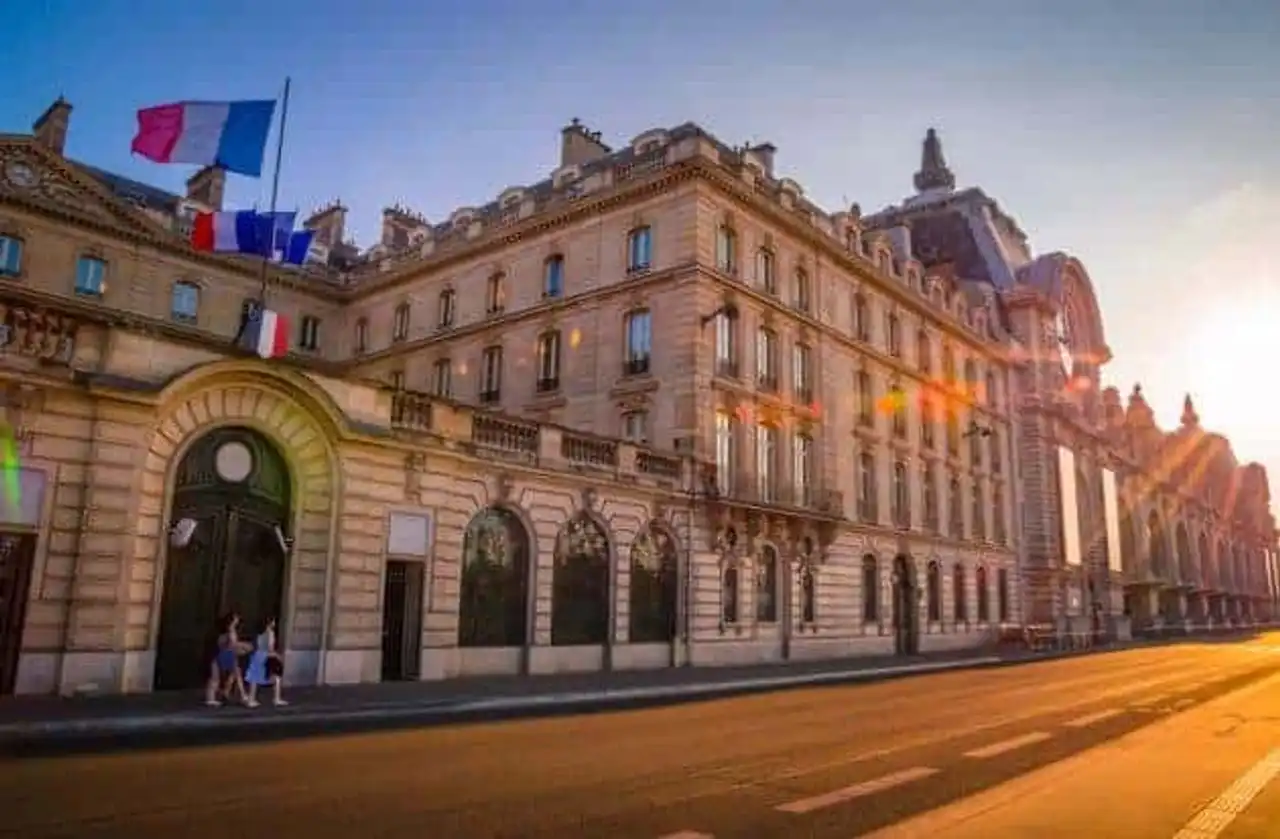







Loading comments ...